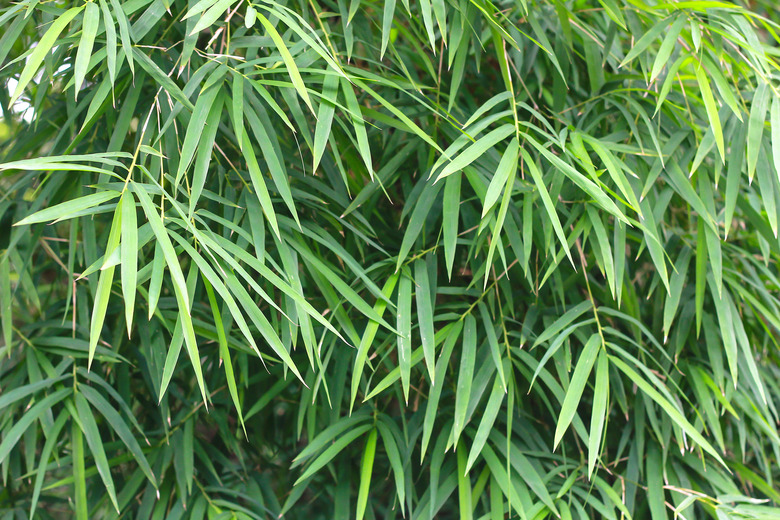How To Grow Bamboo In Pots
We may receive a commission on purchases made from links.
If you love the look of bamboo but don't have much space, you can grow bamboo in pots on your deck or patio. Bamboo is a member of the subfamily Bambusoideae (Poaceae family) of tall tree-like grasses. With the proper pot and ample drainage, bamboo can thrive in a container without worries of the vigorous grass taking over your yard. Some bamboo can grow 20 to 30 feet high, so paying attention to the type of bamboo is important to ensure it stays small and compatible with life in a container garden.
Consider Bamboo Varieties
Consider Bamboo Varieties
Looking at the growing requirements, hardiness zones and mature size of different bamboo varieties helps you choose the best one for your containers. If you live in a cold climate, look for a small bamboo variety with hardiness in your planting zone. Running bamboo varieties often grow taller than clumping bamboo varieties and might work well if you want to create a potted privacy screen with the bamboo. Examples of bamboo species that are compatible with containers include black bamboo (Phyllostachys nigra, USDA zones 7-10) and ruscus-leaved bamboo (Shibataea kumasaca, zones 6-11).
Choose a Container
Choose a Container
A wide, low pot is ideal for growing bamboo in containers. It should also have some weight to it. These two characteristics help keep your bamboo plant stable since bamboo is so tall. The wind can catch the tall grass and knock over the pot if it doesn't have a stable base.
To grow bamboo in pots, the container should be at least 10 gallons, but 20 to 30 gallons is even better. Running bamboo tends to grow more roots, so a larger container prevents it from getting rootbound quickly. This gives you more time before you need to repot the bamboo. Clumping bamboo has a slower root growth rate, so it can often go in a smaller pot.
No matter what size or type of pot you choose, it needs good drainage holes to keep your bamboo healthy. Having two to three drainage holes is ideal. If the pot has only one hole, it should be at least 1/2 to 1 inch in size.
Find the Best Spot
Find the Best Spot
Bamboo grows well in full sunlight. When your bamboo gets lots of light, it produces more foliage. The benefit of growing bamboo in pots is that you can move it to an ideal spot if the plant isn't growing well in its current spot.
Bamboo often benefits from protection in extreme heat and windy conditions. Ensure your potted bamboo has enough moisture on extremely hot days. Choosing a low, wide pot gives your bamboo more stability if you live in a windy area. You can also position it so your house or another structure blocks some of the wind.
Planting and Watering Bamboo in Pots
Planting and Watering Bamboo in Pots
Choose potting soil that drains well to keep the roots of your bamboo plants healthy. Put the potting mix in the bottom of the container to a depth that allows the bamboo to sit at the same height it did in the nursery pot. Backfill the pot, keeping the soil line at the same level on the root ball. Water the bamboo well after planting it in the container. You can also add wood chips or other mulch materials to help retain moisture.
When grown in a container, bamboo needs to be watered more frequently than it would in the ground. The soil in your container is limited and can only hold a certain amount of water. Let the soil dry out slightly but give the bamboo consistent moisture. Misting the foliage helps give the potted bamboo the moisture it likes, especially if it's in a low-humidity area.
Winter Care for Bamboo
Winter Care for Bamboo
If you live in a cold climate, your bamboo might need extra winter protection. Different types of bamboo vary in their cold-hardiness, so find out how cold of weather your bamboo can handle. When it grows in a pot, bamboo has a higher risk of cold damage than it does when grown in the landscape. Move the bamboo plant indoors for the winter if possible or add extra mulch on top and surround the pot with burlap or other materials to insulate it.
